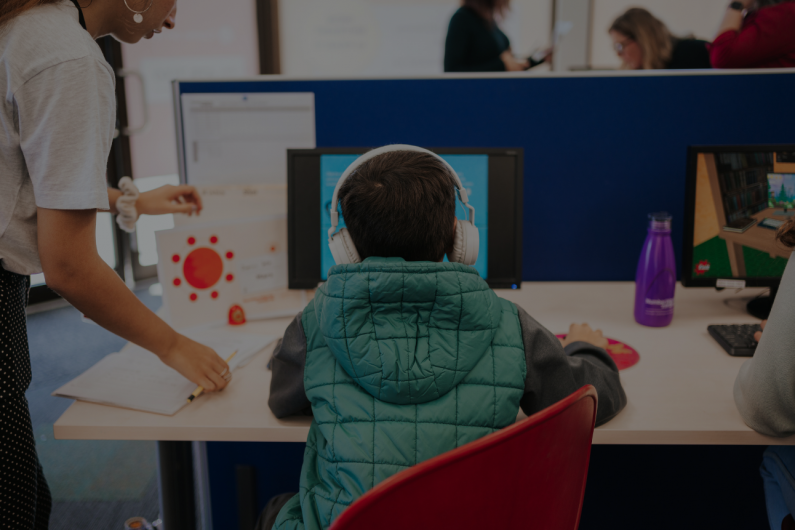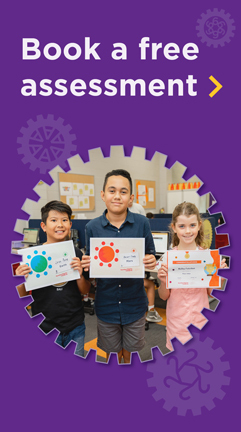Screen Time vs. Learning Time: How to Strike the Right Balance

In today’s world, screens are everywhere: televisions, tablets, smartphones, laptops, and gaming consoles. It is no surprise that many parents feel as though they are constantly navigating the balance between allowing children to enjoy their devices and encouraging them to focus on learning. Screens are not inherently harmful – educational apps, online tutorials, and virtual learning platforms all play a role in a modern education. However, too much of a good thing can tip the balance in the wrong direction. So, how can parents find the right balance between screen time and learning time without feeling like they are fighting an uphill battle every day?
Screens Are Here to Stay
First, it is important to recognise that screens are a part of modern life, and they are unlikely to disappear anytime soon. Whether it is watching a film on a rainy afternoon, participating in an online maths class, or chatting with friends on a video call, screens can provide valuable learning opportunities. Technology can help make complex topics more accessible, such as using interactive games to teach multiplication tables or educational videos to explain science concepts in engaging ways.
The key is not to view screens as the enemy, but as one of many tools available to support a child’s learning journey. Like any tool, screens are most useful when they are used with purpose and in moderation. The goal is not to eliminate screens entirely, as this is neither realistic nor necessary, but rather to help children develop healthy habits around screen use.
Finding the Balance Between Learning and Entertainment
One of the greatest challenges in managing screen time is the overlap between learning and entertainment. A child may begin using a tablet to research a school project, only to be sidetracked by a pop-up ad or an unrelated video. Or they might start watching an educational video but soon find themselves watching unrelated content. This is a common experience for many families.
Striking the right balance means setting boundaries while allowing some flexibility. It is perfectly acceptable for a child to unwind with a favourite television programme after school, but it is equally important to ensure time is also allocated for reading, writing, and practising maths. A useful strategy is to encourage an offline activity after a period of screen time, such as going outside for a walk, reading a book, or working on a creative project.
For example, some families have a routine where learning tasks, such as homework and reading, come before recreational screen time. While this approach is not always perfect, having a structure in place can help set clear expectations and encourage healthy habits.
The Importance of Quality Over Quantity
It is essential to remember that not all screen time is the same. There is a considerable difference between an hour spent playing an educational maths game and an hour spent scrolling through social media or watching random videos. One of the best ways to ensure a child’s screen time is beneficial is to focus on the quality of the content they engage with.
Parents can play a role by showing an interest in the programmes, games, and apps their children use. Asking questions about the content, watching educational shows together, or exploring a new learning platform as a family can help make screen time a shared, meaningful experience. For example, if a child enjoys a particular game, asking them to explain the rules or demonstrate how it works can open up conversations about problem-solving, creativity, and even teamwork. This kind of involvement can transform screen time from a passive experience into an opportunity for learning and engagement.
Recognising When It Is Time for a Break
It is also important to recognise the signs that a child may need a break from screens. If they become irritable, tired, or struggle to focus, it may indicate that screen time has become excessive. Encouraging regular breaks from screens is a helpful way to ensure a healthy balance.
Creating screen-free times during the day can help foster better habits. For instance, some families make dinner time a screen-free zone, allowing everyone to connect and share their day without distractions. Others may choose to have a weekly technology-free afternoon, encouraging activities such as board games, nature walks, or creative projects that do not involve screens.
The Example Parents Set Matters
Children often learn by observing the adults around them. If parents are frequently on their phones during family time or distracted by emails during conversations, it can send mixed messages about the importance of screen time limits. While it is understandable that many adults have busy schedules and responsibilities, being mindful of our own screen use can have a positive impact.
One family found that by setting a rule of “no phones after 7pm,” they were able to spend more quality time together in the evenings. Although it took some adjustment, they noticed that everyone was more relaxed and better connected. Simple changes in adult behaviour can help model healthy screen habits for children.
Striving for Balance
There is no perfect formula for balancing screen time and learning time. Every family is different, and what works for one may not work for another. The goal is not to aim for perfection but to focus on progress. By being aware of how much time children spend on screens, guiding them towards high-quality educational content, and setting clear boundaries, parents can help their children develop positive habits that will serve them well into the future.
The next time you find yourself wondering how to balance screen time and learning time, remember that it is not about eliminating screens entirely or creating a rigid set of rules. It is about finding a balance that suits your family’s needs, one step at a time. And if the occasional light-hearted video finds its way into the mix, that is perfectly fine too - because, after all, balance is what it is all about.



